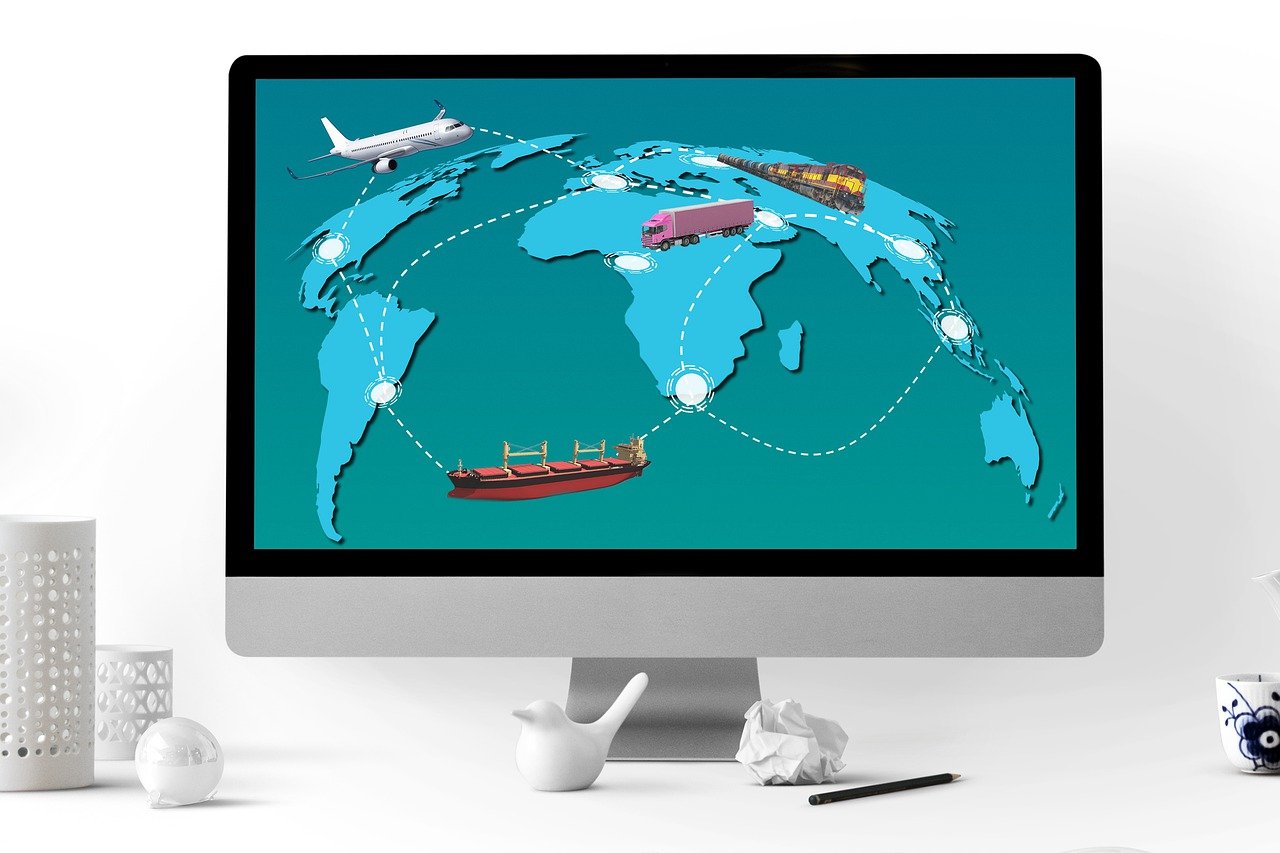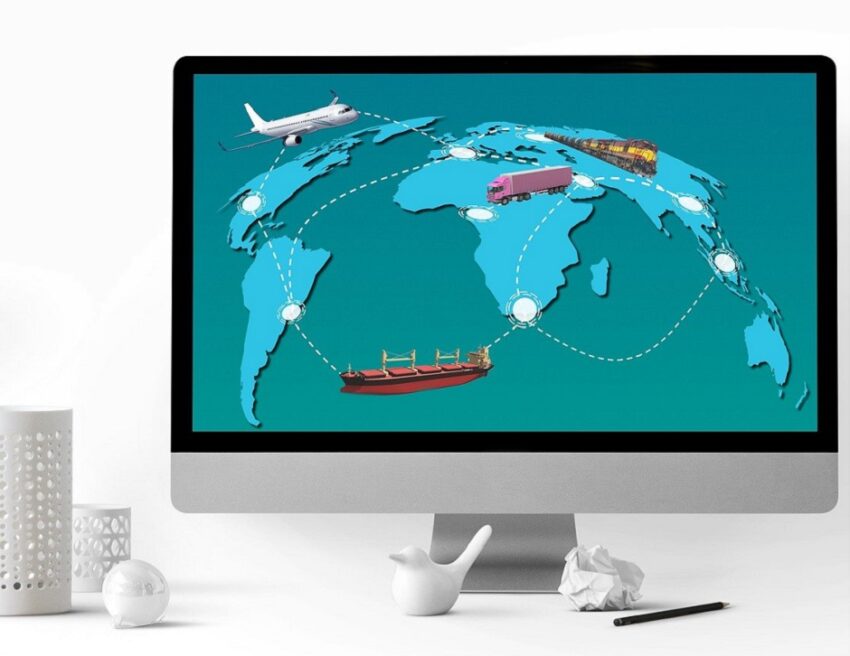Supply Chain Risk Management is the systematic process of recognizing, evaluating, and alleviating risks across the entire supply chain to guarantee its seamless functioning. This encompasses managing risks associated with suppliers, logistics, compliance, and external variables such as geopolitical tensions, natural calamities, or market fluctuations. Successful SCRM strives to reduce disruptions, guarantee continuity, and sustain the efficiency and dependability of the supply chain. It adopts a proactive stance by anticipating potential risks and devising strategies to promptly and efficiently tackle them as they emerge.
In today’s blog, we are going to talk about the top supply chain challenges that could beset the logistics sector in 2024 and how freight forwarding companies should prepare themselves.

Possible Supply Chain Challenges in 2024
-
Global Political Unrest
Instances such as the US-China trade war and the Russia-Ukraine conflict exemplify how international events can permeate supply chains, often resulting in adverse consequences.
These geopolitical dynamics create uncertain operational landscapes, leading to escalated costs, heightened complexity, and decreased efficiency within supply chains. Additionally, they impact global logistics routes and have the potential to escalate tensions across borders. Geopolitical risks extend beyond the global stage and present significant challenges at the national level. For example, a global issue like the Israel Palestine war can trigger a cascading impact, affecting supply chains in countries in the Middle East. The interconnected nature of these disruptions implies that global geopolitical unrest makes its effect felt on every nation.
How independent freight forwarders can cope with this issue
On a domestic level, internal political dynamics, including conflicts between political parties, rallies, worker strikes, and other events, can significantly disrupt supply chains. In spite of these challenges, independent freight forwarders can maintain operational continuity by avoiding excessive reliance on a single supplier for a significant portion of their products. By diversifying the supplier base logistics companies can make flexible decisions and optimally allocate resources within their supply chains, proactively addressing risks. Moreover, the integration of technologies such as AI and predictive analytics enhances supply chain agility. Rapid identification of optimal links within the supply chain allows businesses to mitigate risks and adapt to changing circumstances more effectively.
-
Shortage in Labour
In recent years, supply chain leaders have grappled with significant labor shortages, primarily stemming from external challenges such as pandemics, inflation, and political instability. An example of this impact can be observed in understaffed factories where the scarcity of available workers leads to slowed or halted production, resulting in skewed inventory levels that disproportionately affect distributors. In logistics, the shortage of labor hampers the smooth transportation of goods between parties, causing delays and dissatisfaction among customers.
Managing the Risk
Given the dynamic and adaptive nature of the world, addressing this imminent risk requires a shift in how supply chain leaders approach their operations. To effectively manage labor shortages, leaders are encouraged to reassess their hiring processes, retention practices, and compensation strategies. Creating a balanced work environment that caters to the needs of all employees is essential in mitigating the impact of labor shortages on the supply chain.
-
Port Congestion and Warehousing Shortages
The ongoing global supply chain crisis, aggravated by two years of pandemic-related disruptions, severe labor shortages, and outdated infrastructure, has led to substantial congestion at global ports. Consequently, warehouses are not operating at full capacity, leaving supply chain leaders scrambling for adequate space.
Managing the Risk:
To address these challenges, companies should adopt technologically-driven, robust processes utilizing real-time and predictive visibility platforms. These platforms can offer advance information on congestion and bottlenecks at global ports. Warehouse managers can benefit from digital platforms that integrate Warehouse Management Systems (WMS), capable of handling demand planning and forecasting through real-time monitoring of inbound and outbound assets. By leveraging such technologies, supply chain stakeholders can enhance their agility, proactively addressing congestion issues and optimizing warehouse operations amidst the ongoing complexities of the global supply chain landscape.
-
Extreme Weather could Pose Significant Challenges
The escalating frequency and severity of climate-related hazards, such as extreme weather events, are anticipated to amplify disruptions in global supply chains. These disruptions have the potential to interrupt production, escalate costs and prices, and adversely impact corporate revenues. The intricate network of interdependent supply chains, facilitating global trade in goods valued at nearly $20 trillion annually, is notably susceptible to these climate hazards.
Certain supply chains, such as those for semiconductors and rare earth metals, are highly concentrated in geographical areas with an increasing likelihood of relevant climate hazards.
Way out:
The adoption of sustainable practices is increasingly recognized as a vital strategy for mitigating risks associated with climate change. However, this necessitates substantial upfront investments, posing challenges for organizations with constrained budgets. Considering climatic conditions, companies are consistently urged to embrace a sustainable approach when collaborating with suppliers. Investors and customers in today’s marketplace demand that companies adhere to Environmental, Social, and Governance (ESG) and sustainability standards and extend these practices within their supplier network.
To thrive in this era of climatic uncertainty, it is imperative for manufacturers as well as logistics service providers to adopt sustainability practices. This alignment is not only critical for their survival but is also instrumental in assisting companies in achieving their sustainability goals.
-
Rising Inflation
The interconnected nature of the supply chain means that when prices rise in one area, there is a ripple effect throughout the entire operation. Presently, there is substantial inflation in labor, energy, and transport costs, posing significant risks to the existing supply chain. As reported by the Economics Observatory, the Consumer Price Index in the USA indicated a 5.4% increase in consumer prices in December 2021 compared to the previous year.
How Logistics Companies can Cope
One effective strategy for independent freight forwarders is to diversify the supplier base, implementing strict contract timeframes to accommodate sudden price changes. Vigilance in monitoring trends is crucial, and managing the financial aspects of the supply chain ensures protection when confronted with the next wave of risks. By proactively adopting these measures, supply chain leaders can enhance the resilience of their operations in the face of fluctuating costs and economic uncertainties.
-
Increased Occurrence of Cyber Thefts
The cyber scenario is rapidly evolving and since global supplier networks become more interconnected, it has become crucial to carefully consider the sharing of proprietary data with suppliers.
The complexity of these networks, often involving multiple fourth parties, creates an ideal target for hackers due to reduced traceability and transparency. A notable example is the Okta hack that occurred in January 2022. In today’s landscape, companies are incorporating technologies like the Internet of Things (IoT) in supply chain management. While these technologies enhance the ease of managing a supply chain network, they also introduce new avenues for cyber attacks.
This underscores the need for a robust governance framework and risk management approach. While AI-driven security solutions and threat intelligence can significantly enhance the ability to predict and identify cyber threats, it’s essential to recognize that cybercriminals are also exploiting these technologies to refine their attack methods.
Way out
To counteract these growing supply chain challenges, it’s crucial for companies to collaborate with their partners. Establishing a robust security plan involves continuous vigilance, prioritizing focus based on risk assessment, educating employees about security practices, implementing strong passwords and security checks, keeping systems up-to-date, and ensuring that everyone in the supply chain recognizes the critical importance of security.


